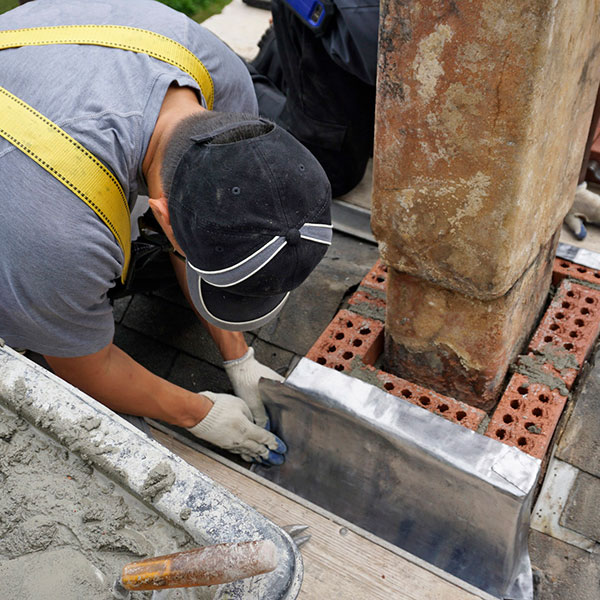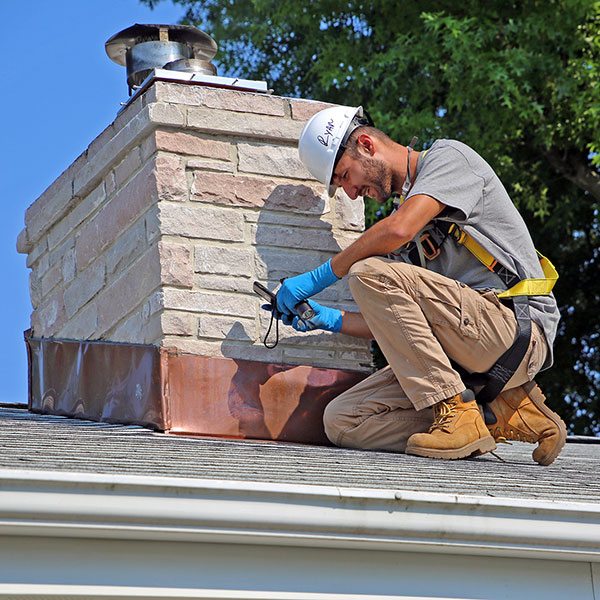About Your Chimney Flashing and What Can Go Wrong
Chimney flashing is a metal fitting installed where the chimney meets the roofline. It creates a watertight seal to prevent water leaks. Most flashing is a metal material like copper, steel, or aluminum, but PVC and even lead has been used for flashing. Homeowners don’t often realize there is a flashing problem until they notice a chimney leak. Therefore, it should be inspected regularly to ensure there is no rusting, warping, or other damage to the flashing.
 Chimney Flashing Installation
Chimney Flashing Installation
When flashing is correctly installed, it is done in two layers. The first layer is called the step flashing. The second layer is the counter flashing. For the first layer, L-shaped flashing material is layered between the shingles and up the side of the chimney.
First, step flashing is installed under the shingles and bent to form an L-shape up against the chimney. The contractor must ensure there are no cracks or gaps before installing the counter flashing. Next, the second flashing piece is bent down over the step flashing and lodged into a mortar joint. A chimney cricket or saddle may also be installed to prevent water and snow from collecting on the roof. Quality installation is especially necessary around the corners, and caulk is often applied for a watertight seal.
Chimney Flashing Repairs
Depending on the material, chimney flashing has a lifespan of 10 to 15 years or more, but you should watch out for leaks, especially if you recently moved into a home. Older flashing may have rust or corrosion, and you should regularly check for signs of water leaks in the attic, like water stains or wood rot. Severe storms, ice, and heavy winds can also damage flashing. Water leaks can be very destructive to the chimney system. If you see any water spots on the ceiling or walls near the fireplace, get a professional chimney inspection as soon as possible.
 Fresh caulking will typically resolve minor leaks. In the event of severe deterioration, you may need to replace the flashing. As with any chimney component, an annual inspection is the best preventative measure.
Fresh caulking will typically resolve minor leaks. In the event of severe deterioration, you may need to replace the flashing. As with any chimney component, an annual inspection is the best preventative measure.
Chimney Flashing Replacement
When installing flashing, many contractors use galvanized steel due to its lower cost. However, galvanized steel is prone to rust when the zinc coating is compromised due to weather conditions. Consider stainless steel when replacing chimney flashing. It is rust-resistant, and it is more durable than aluminum.
Chimney leaks can progress to more severe problems in your home, including mold and bacteria. An annual chimney inspection will help spot minor flashing issues and prevent water damage.


